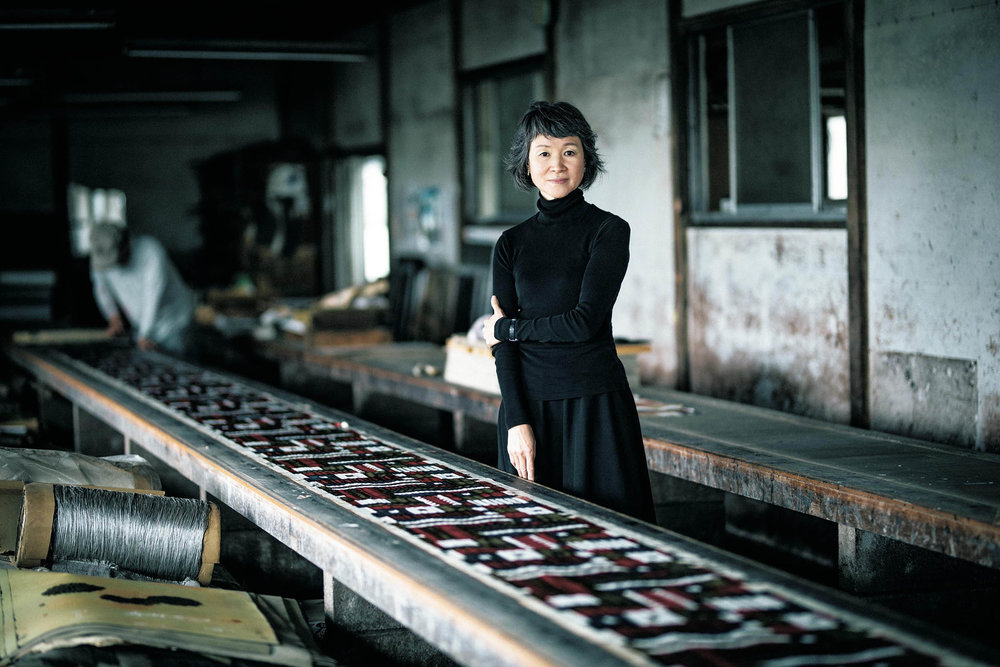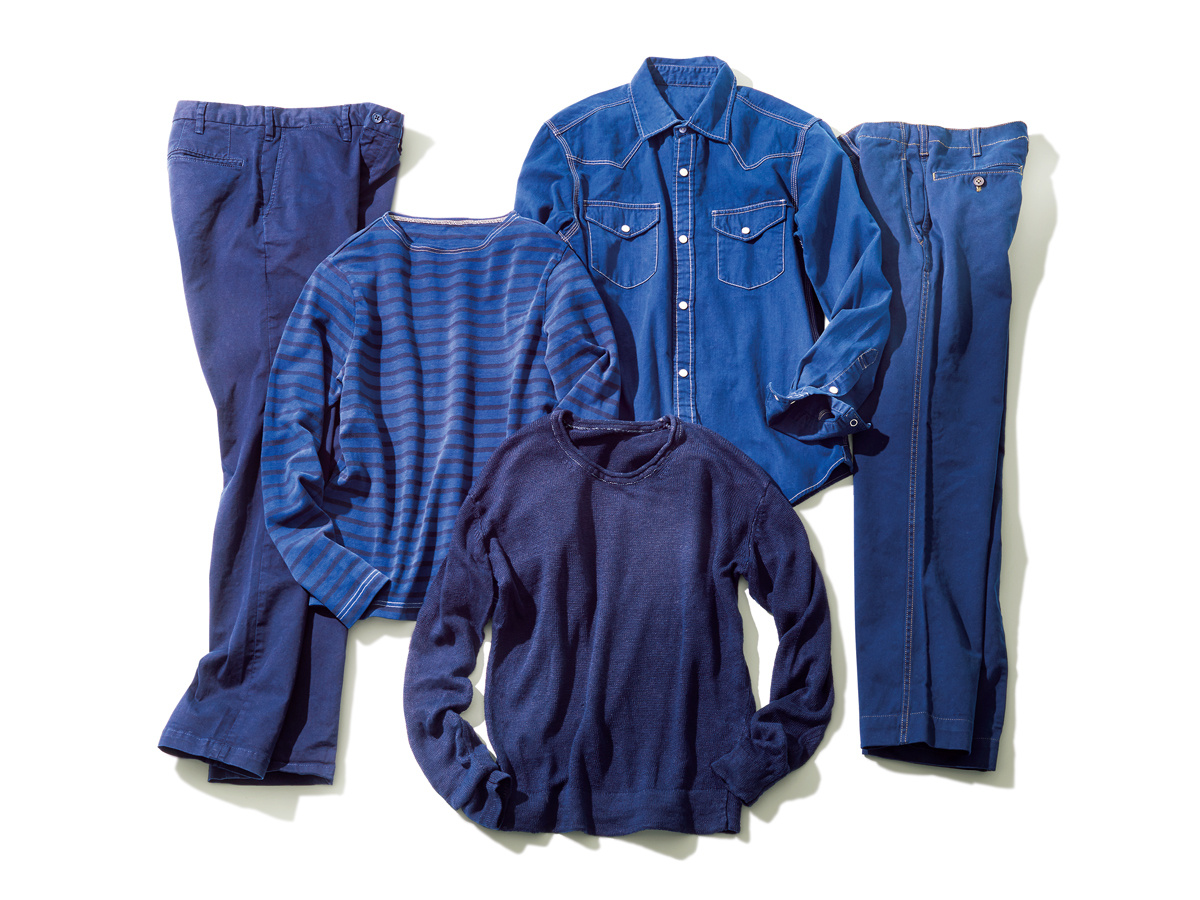An Op-Ed on the intersection of Culture and Sustainability in Japan
A multicultural phenomenon, the global fashion industry provides sustenance to designers from a plethora of cultural backgrounds. Exploring the lessons, traditional practises and cultural philosophies which might benefit the ethical fashion sector, I focused on two countries close to my heart; Ghana, the birthplace of my parents, and Japan, an intriguing country I studied in school (picking up an AS in Japanese). In doing so I wonder if the space where culture and fashion intersect provides progressive ground in the sustainable fashion conversation.
Japan’s Praise of Shadows
Globally fashion designers rely on culture beyond aesthetic inspiration, and now Japanese brands – from small independents to high street behemoths – are applying sustainable practises, directly influenced by ancestral tradition to innovate, tackle waste and deliver one-of-kind sustainable products. Three years after Dame Vivienne Westwood told the London crowd at her SS114 show to “Buy less, choose well, make it last…” – Japanese textile expert, designer and shop owner Reiko Sudo believes the remark, which “indicates that today’s fashion has lost relevance in new lifestyles, and that the value of treating clothes with care has been lost” tells a story of discernment and durability, and well-captures a growing zeitgeist in one of Japan’s subcultures. Fast-fashion is increasingly being challenged by more-value driven lifestyles, where culture exerts increasing influence; during the Edo period (1603-1868), a cherish, mend-and-darn philosophy was prevalent and now this Japanese spirit of “Mottainai” – which means not letting things that have value go to waste – is re-emerging.
Whilst sitting on the Advisory board of Muji – a subsidiary of Ryohin Keikaku – Sudo believes traditional practises are increasingly worthy of attention with practical applications for the modern age. Re-Muji, a highly impactful recycling initiative launched in 2014 is one such example of a successful cultural throwback – used or unwanted clothes were dropped off in store, sorted and the wearable ones identified before being washed and dyed with indigo “Muji and 25 other companies formed part of a project initiated by JEPLAN to recycle textile products. This practise directly harked back to the past when every community had a local, shared indigo dyer who washed and re-dyed clothes or fabrics once they had faded.” Revitalised with the natural hue best known as ‘Japan Blue’, pre-loved limited edition clothes for men and women were resold (successfully going strong last year ReMuji added reclaimed wool to the offering), communicating a message of timelessness directly in tune with the cultural origins of the initiative. By giving additional life to old or dated styles, and secondly (by way of JEPLAN’s BRING FUKU FUKU ingenious recycling scheme) converting any unsalvageable donated textiles into energy – specifically bioethanol – simply looking at culture offered fresh innovation to the recycling and waste conversation.
Sudo, a respected figure within Tokyo’s fashion and art world (MOMA Tokyo and New York some of her many accolades), also recalls the ‘Shikkaiya’, skilled fix-and-mend textile experts of the high-season Kimono days who performed a range of services including patchwork, cleaning, unseaming and mending. “Back in the days of kimono, there were Shikkaiya trouble-shooters who dealt in all sorts of textile products. Shikkaiya evolved with Japanese kimono culture but when people stopped wearing kimono every day they also disappeared, except in silk producing areas like Kyoto and Niigata. Re-Muji draws upon Japanese traditions of caring for fabric.” Currently textile products thrown away, incinerated using fuel, or sent to the landfill equate to 1.97 million tons annually’, with 90% of textile products becoming combustible waste in absence of an established recycling system, so when wardrobes can become literal oilfields, and one man’s trash can become another man’s treasure, all solutions are welcome.
Anrealage in Praise of Shadows
Reiko Sudo believes the nature of people’s relationship with clothes is changing once more. “There is a new breed of designers who hold that clothes showcase new values, suggesting that people’s interest in clothes amounts to couture.” This ‘couture 3.0’ demands an accessible, original, well-made garment, made to be cared for, indefinitely, hefty price tag not as standard. The high-volume churn of cookie-cutter identicals with which consumers have no lasting relationship is something this new breed of designers and their loyal customers reject. According to Sudo, in this space, ANREALAGE – founded in 2003 by enigmatic Kunihiko Morinaga – are pack-leaders, uniquely connecting sustainable design and practises, with cultural traditions. “We make patchwork clothes by piecing hundreds of small fabrics together. Patchwork as it is now has more fashionability, however, Japanese people initially did not do so for design or fashion, it was the thoughts to reuse what was left. I also believe sharing second-hand clothes within family, older to younger, originated in the idea of patchwork in Japan.”
Tokyo-born Morinaga’s love for ‘no-two-are-alike’ elements is also inspired by Japanese author Jun’ichirō Tanizaki’s 1993 ‘In Praise of Shadows; the book offers powerful insight into the philosophy of Japanese aesthetics, including the call to embrace various materials’ shadows and imperfections by asserting that these create dimension, depth and character. Tanizaki writes, “Were it not for shadows, there would be no beauty”, and this Japanese culture of embracing shadows versus the West’s habit of brightening up spaces with clarity, is one Morinaga believes can manifest in sustainable design.
“We discovered its own beauty by accepting the existence of the darkness(shadow) and using it. Japanese beauty born when no electric lights existed has been built into Japanese culture,” he explains of a design philosophy which rejects the demand for identical perfection. “It is another way of thinking that by admitting and accepting its darkness (negativeness), we find a beauty in it what other people overlook.” Fifty years after Edison’s electricity illuminated America, the author lamented how something advantageous, when used in excess, became ugly and destructive; the rapid post-19th century displacement of natural, eco-friendly alternatives such indigo (tadeai) and crimson red (benibana) by inexpensive synthetic dyes, is one such example. The spirit of “In Praise Of Shadows” asserts that embracing the more nuanced continuum these dyes create (MUJI’s ReMuji disclaimer prepped customers for this very thing, reading ‘All are one-of-a-kind items…depending on the material, original color, and condition of the collected items, the final dyed color may differ between items’) – reflects elegance and discerning austerity.
Anrealage designer Morinaga is positive about an end to the frivolous devaluation of clothing known as fast fashion. “I believe the mass consumption clothing market is close to its end. Creating original or quality fabrics by using new techniques is more important than chasing the latest design or trend.” In the spirit of conservation, Anrealage’s 2017-18 A/W Collection’, which featured rolls of fabric, denim selvage, zips, ribbons and buttoned hems, used an innovative new technology to create a ‘no-two-are-alike’ bleach effect on denim. “We used absolutely no water, only laser technology. As a result, I believe it became a sustainable item.” By combining advances in technology yet embracing culture Morinaga believes that a sustainable shift in the expression of fashion and the way clothes are made and expressed will continue to take place. Most certainly, something to ponder…


